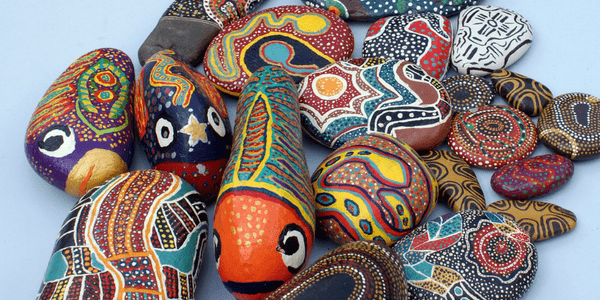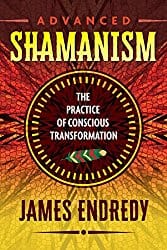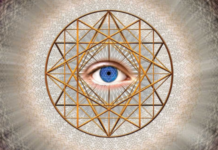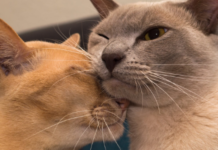
 Advanced Shamanism: The Practice of Conscious Transformation, by James Endredy
Advanced Shamanism: The Practice of Conscious Transformation, by James Endredy
Bear & Company, 9781591432838, 257 pp., 2018
Advanced Shamanism: The Practice of Conscious Transformation begins with an account of how author James Endredy began his shamanic journey. He speaks of his love of nature, the importance of healing oneself, and how he was drawn to esoteric teachings and the spirituality that is practiced by indigenous cultures throughout the world. During his life, he learned from elders of many different tribes including the Seneca, Yucatec Maya, Navaho, and Tukano. While visiting the peyote desert, he received a message from a spirit about something he must do in his life: write a book. Since then he has written several books, including Earthwalks for Body and Spirit, Teachings of the Peyote Shamans, and The Flying Witches of Veracruz. He leads workshops throughout the United States, Canada, and Mexico and is involved in preserving the world’s indigenous cultures and sacred sites.
Shamanism is an ancient system that maintains the balance between society and nature. A shaman performs many activities including healing, singing, and being an intermediary between the human and non-human world. It is interesting to note that although shamanism is practiced throughout the world in many different cultures, the basic elements are very similar.
Endredy writes about the importance of the holographic field in which our life experiences are stored. He states that one’s field can become connected with the fields of others, and that is how a person might know suddenly that their loved one has just been hurt on the other side of the world. In a personal story, he states:
I was completely overcome by the sheer magnitude of the human enterprise: the noise, the grime, the foul air, the crowds, and especially the lack of psychic connection to the natural world. I could barely hear any input from any other living beings. I became painfully aware that the humans had killed or scared away all the natural spirits. They had created a spiritual vacuum, an island of purely human concerns.1
This can be seen in every major city in the world. Instead of interacting with one another, people gaze at their televisions and cell phones and have shut themselves off from the spiritual. Even if they say they are a believer in the gods and goddesses, they pay little attention to them unless they need them for something, like when they are sick or want money.
The first practice exercise in the book is called Bringing Forth the Sacred Fire with Intention. This is done through performing a ritual where you bring forth fire in a sacred way through merging your consciousness with it. Endredy gives in-depth instructions on how to do this by describing the space, tools, directions, and how to feed and talk to the fire. It is important to address the fire as “Grandfather Fire” out of respect and personal connection. When you begin, you also address Grandmother Growth and “all my companions,” referring to all the living entities around you including the trees, animals, wind, stars, and sky. He explains that the ritual must be done with clear intentions and with great respect for fire’s ancient wisdom. All the other practices in this book stem from this one.
One of the topics that have always interested me was that of “spirit animals” or animal guides.2 Endredy gives advice on how to acquire one that goes beyond what most people might already know. He says that having knowledge of an animal is much more important in making contact than if you just use mental imagery. If you wish to have a visit from the spirit of an animal, it is important to spend time in the environment where that animal resides. The more you spend time around the animal, the deeper the spirit of that animal will affect you. Often animal spirits will come to people as they become open and ready to receive them. Where a person lives should be considered when approaching an animal spirit. For example, if you live in the city, a squirrel may be much easier to work with than trying to find a deer that might only live in a secluded place in the mountains.
He goes on to speak about the jicara. It is a powerful shamanic technique used to employ the unique energy of an animal spirit. It is a bowl used to hold sacred items and is infused by the spirit of the animal and by the living entities that support it. The bowl is usually made of clay and should be made by you or someone close to you. The jicara will not be activated until it is consecrated with the blood of the animal in the presence of the energies of the earth, air, water, fire, and spirit. To consecrate, you will need the physical body of the animal, which you will most often find dead. It is only because the animal has decided to grant you its flesh and blood that you have received it, often because of your perseverance and commitment to that spirit.
To find your true animal guide can take years, according to the teachings of Endredy. This requires that you seek out the actual physical manifestation of the animal and spend time with it by watching, studying, talking, and learning all you can about it. You can then begin to gather the essences for the jicara by obtaining items containing the energy of the animal such as a feather, foods the animal eats, drawings, and items from its habitat. Some ways in which the jicara can be used is through ceremonial use, protection, and group work. Endredy expresses how important it is that you relate to the spirit of the animal at a deep level. He states:
If we are naturally offered feathers, antlers, claws, or a tooth, it is paramount as Shamans that we make use of them. Only when you look at the beautiful body of a dead animal and realize that the spirit of that animal gave this to you- a treasured gift to help you learn about the animal and take your knowledge to the next level- will you be able to thank the spirit by consecrating and activating the living spirit of your jicara with the flesh and blood of the animal it contains.3
When I first read this, I had mixed feelings as I was always taught as a child to stay away from dead animals. This expanded my thinking, and now I understand the powerful connection one can have with an animal guide. What one would see before as gross or dangerous, becomes something spiritual and beautiful.
Another topic that I find fascinating is the te’ka stones. They are found in the natural environment and encountered when you least expect them, and this usually occurs in nature when you listen for the te’ka singing. It is important to not go looking for one but instead to find one calling to you on your path while walking. Each te’ka stone has different gifts and some may not want to work with you but be left alone instead. Some of the different kinds of teak stones are the balancing te’ka, guardian te’ka, physical healing te’ka, and the courage te’ka. To encounter, work with, and care for te’ka is one of the rewarding aspects of shamanism.
Animal totems are a very popular subject for many people and are a big part of shamanism. By meeting with animals in a dream you have many opportunities to learn, help, and be helped. Shamans relate to animals on both the physical and spiritual level. By doing this they acquire knowledge and power and connect with the spirits of deceased ancestors who have taken animal form. While reading this part of the book, I went for a walk and came across a rabbit sitting in the grass. I took this as a special sign that my reading of this book was being picked up psychically by the living creatures close by and that they wanted me to know. It is one example that our actions don’t go unnoticed.
Endredy talks about the many aspects of shamanic healing and gives a lot of advice on how to prepare. He stresses that a person who wishes to travel down this path should not attempt to heal another until they have mastered all the steps that teach you to do it well. You must also be energetically clean, clear, and strong and be completely detached from emotions and the controlling ego. If you don’t do things as instructed, you might become ill and need to be healed yourself. It is best to take as long as you need to master the techniques before beginning.
The book concludes with an appendix on ethics and shamanic practitioners, some notes, a glossary, bibliography, and an index. Endredy is very serious when it comes to ethics in shamanism. He discusses the effects of globalization, carelessly opening the spirit world, the teaching and selling of “shamanic practices” that are not shamanic, and the exploitation of shamanic travel. He lists the five ethical responsibilities for shamanic practitioners which are service, expertise, integrity, peer review, and the reasonable exchange of energy.
I liked Advanced Shamanism a lot. Each chapter has practice exercises you can do to deepen your knowledge and experience. Endredy recommends that you go at your own pace, so you will truly understand each step. He has the steps in the order of which they should be practiced and advises not to skip any to get ahead. I would recommend that for those who are just beginning to learn about shamanism to first read some books written specifically for beginners. By doing so, you will then have a greater understanding of the lessons and practice exercises in this book.
Shamanism is amazing to learn about. It will give you a deeper respect for not only this ancient tradition but for nature, the spirits, and the teachers who have passed down their knowledge to us.
Image Credit: Howard G Charing
- p. 26 [↩]
- Editor’s note: The information presented in this article is reflective of Endredy’s perspective. The term “spirit animal” has a complicated history due to colonization. For more information on the misappropriation of this Indigenous spiritual practice please see “Not your spirit animal: Cultural appropriation, misinformation, and the Internet,” by Donyae Coles. [↩]
- p.58 [↩]








